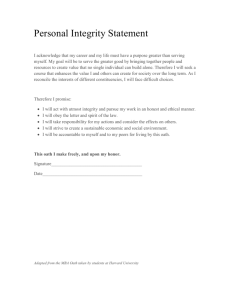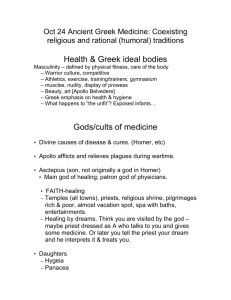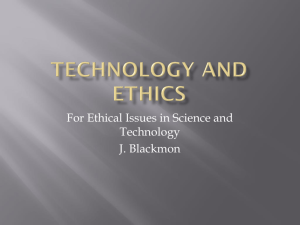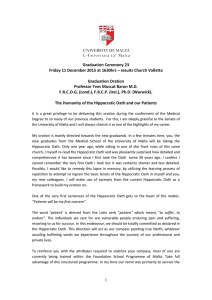Least Harm Theory
advertisement
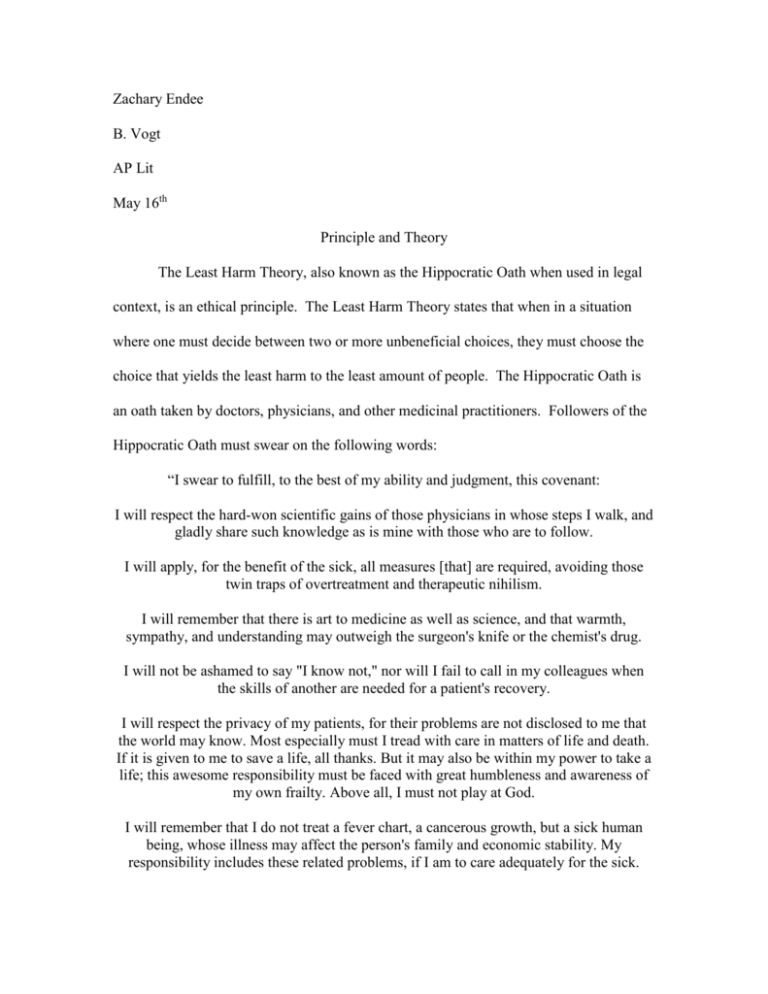
Zachary Endee B. Vogt AP Lit May 16th Principle and Theory The Least Harm Theory, also known as the Hippocratic Oath when used in legal context, is an ethical principle. The Least Harm Theory states that when in a situation where one must decide between two or more unbeneficial choices, they must choose the choice that yields the least harm to the least amount of people. The Hippocratic Oath is an oath taken by doctors, physicians, and other medicinal practitioners. Followers of the Hippocratic Oath must swear on the following words: “I swear to fulfill, to the best of my ability and judgment, this covenant: I will respect the hard-won scientific gains of those physicians in whose steps I walk, and gladly share such knowledge as is mine with those who are to follow. I will apply, for the benefit of the sick, all measures [that] are required, avoiding those twin traps of overtreatment and therapeutic nihilism. I will remember that there is art to medicine as well as science, and that warmth, sympathy, and understanding may outweigh the surgeon's knife or the chemist's drug. I will not be ashamed to say "I know not," nor will I fail to call in my colleagues when the skills of another are needed for a patient's recovery. I will respect the privacy of my patients, for their problems are not disclosed to me that the world may know. Most especially must I tread with care in matters of life and death. If it is given to me to save a life, all thanks. But it may also be within my power to take a life; this awesome responsibility must be faced with great humbleness and awareness of my own frailty. Above all, I must not play at God. I will remember that I do not treat a fever chart, a cancerous growth, but a sick human being, whose illness may affect the person's family and economic stability. My responsibility includes these related problems, if I am to care adequately for the sick. I will prevent disease whenever I can, for prevention is preferable to cure. I will remember that I remain a member of society, with special obligations to all my fellow human beings, those sound of mind and body as well as the infirm. If I do not violate this oath, may I enjoy life and art, respected while I live and remembered with affection thereafter. May I always act so as to preserve the finest traditions of my calling and may I long experience the joy of healing those who seek my help.” While the Least Harm Theory is ethically correct, in my opinion, I believe that it isn’t ideal. Although somebody might have taken the best option in a situation, that does not necessarily mean they chose a good, beneficial option. The outcome of the situation could still be negative. This theory could be compared to the principle of Utilitarianism. Utilitarianism states that one must pursue the very best possible outcome for a situation. I feel that the only difference between these theories is optimism. Those who follow the Least Harm Theory will “settle” for a potentially bad outcome, whereas those who follow Utilitarianism will try to predict the situation and prevent the possibility of having to choose a negative option entirely. The Least Harm Theory is an argument frequently used in the ethics of eating meat versus vegetarianism or veganism. Studies and debates have been conducted to decide whether killing the animals directly for meat or harvesting the crops they feed on is more ethical. If one values each individual life equally, whether it be a field mouse or cattle, eating meat yields to the least lives lost, causing the least amount of harm to the least amount of lives. In conclusion, I believe that the Least Harm theory is a moderately stable ethical principle, despite the fact that it does not always yield positive results; it yields the best possible outcome for a situation. I believe it is necessary for anybody dealing with matters concerning the wellbeing of others to follow this principle. Regan, Tom. "The Least Harm Principle Suggests That Humans Should Eat Beef, Lamb, Dairy, Not a Vegan Diet." Freerepublic.com. Department of Animal Science, 2001. Web. 16 May 2011.





